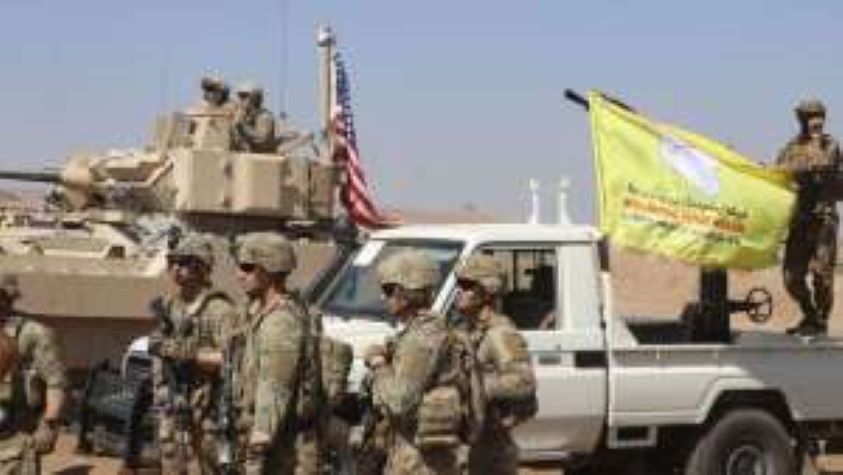NORTH AND EAST SYRIA — Despite over six years having passed since the military defeat of the ISIS terrorists in its final stronghold of Baghouz in 2019, field developments in North and East Syria throughout 2025 reveal a starkly different reality. The organization’s sleeper cells have repositioned themselves in the shadows, capitalizing on security vacuums resulting from recent security incidents and a state of lawlessness. These cells have launched a series of deadly attacks, once again threatening the stability of the region.
The Syrian Observatory for Human Rights (SOHR) has recorded 192 attacks by ISIS sleeper cells in the Democratic Autonomous Administration of the Region of North and East Syria (DAARNES) – held areas, since the start of the year. The operations have left 91 people dead, including 65 Syrian Democratic Forces (SDF) fighters, 13 civilians, and 12 ISIS members.
While these figures do not approach the scale of ISIS’s dominance during its peak, they nonetheless point to a troubling surge in activity. The attacks also demonstrate a clear evolution in tactics — ranging from armed ambushes to bombings and direct assaults on military checkpoints.
Among the most notable recent ISIS operations were an ambush targeting an SDF patrol in the town of al-Bahrah in eastern Dayro Zcuro (Deir ez-Zor)., a surprise attack on a military headquarters in Abriha, and sporadic assaults on checkpoints and surveillance posts across Hasakah and Raqqa.
The SDF, with the Syriac Military Council (MFS) as a key component, remain on the front lines of confronting this renewed threat. Despite limited resources and sustained political and military pressure from both the Syrian government and Turkey, the SDF continues to shoulder the primary burden of counter-terrorism operations in the region.
Military officials within the SDF stress that support from the U.S.-led International Coalition remains the decisive factor in preventing ISIS terrorists from regaining operational capacity. This support goes beyond airstrikes, encompassing intelligence sharing, training of local forces, and participation in special operations targeting senior leaders of the terrorist organization.
The Coalition’s presence provides a deterrent shield that prevents ISIS cells from entrenching themselves across wide areas—particularly in the Syrian desert and the eastern countryside of Dayro Zcuro, where the complex terrain offers natural safe havens for extremists.
Conversely, the continued political deadlock in Syria and the division of spheres of influence—between the government in Daramsuq (Damascus), Turkish forces, and their allied factions—have created security vacuums that ISIS exploits with precision. The vast rural stretches linking Dayro Zcuro, Raqqa, and Hasakah illustrate this reality clearly. While the SDF focuses on maintaining local security, ISIS cells infiltrate from Iraq, the Syrian desert, and other areas outside the region, launching attacks in zones that are difficult to secure on a continuous basis.
Local and international reports indicate that ISIS terrorists are increasingly relying on war-of-attrition tactics—small, repeated attacks designed to exhaust local forces and undermine public confidence in the DAARNES
Meanwhile, in Washington’s policy circles, debates over the necessity of maintaining the U.S. military presence in North and East Syria resurface periodically. Yet the realities on the ground in 2025 offer a clear answer: a withdrawal of the International Coalition at this stage would amount to a free gift to ISIS.
The likely outcome of such a withdrawal would be the reestablishment of ISIS control over new pockets of territory. The data underscores that the organization’s threat has not disappeared but has instead morphed into a renewed danger rooted in a war of attrition.
Observers warn that a sudden withdrawal or downsizing of International Coalition forces would open a wide security vacuum—one that ISIS cells could quickly exploit to expand their influence once again; the U.S. withdrawal from Iraq in 2011 paved the way for ISIS’s meteoric rise in the years that followed, prompting Washington to launch the Combined Joint Task Force–Operation Inherent Resolve (OIR) in June 2014 at the request of the Iraqi government.
On the other hand, the SDF and partner the MFS, remain the spearhead in the fight against ISIS in North and East Syria. Yet their operational capacity relies heavily on the aerial, intelligence, and logistical support provided by the International Coalition—making the coalition’s continued presence a strategic necessity, especially in the absence of a comprehensive political solution to the Syrian conflict.
Meanwhile, other parts of the country, such as Holeb (Aleppo), are witnessing rising security tensions between Syrian government forces and the Internal Security Forces (ISF) affiliated with the Democratic Autonomous Administration. In a statement issued last Friday, the ISF in Holeb denied targeting any government military vehicles in the vicinity of the city’s Ashrafiyeh neighborhood, stressing that “these reports are untrue” and urging citizens and media outlets to rely solely on their official statements as a trusted source of information.
This comes as Syrian government-affiliated armed groups have closed yet another road leading into the Sheikh Maqsoud and Ashrafiyeh neighborhoods of Holeb, after previously sealing off other access routes. They have also erected earthen barriers on key roads such as Lyermon, Jandoul Roundabout, and the road near al-Jalaa Club, effectively cutting off movement to these predominantly Syriac and Kurdish areas.
According to observers, developments in North and East Syria are not merely a series of intelligence operations against scattered ISIS cells, but a long contest between stability and a return to chaos. The SDF remain the first line of defense, yet they cannot shoulder the burden alone without continued political, military, and intelligence support from the International Coalition.
For its part, the coalition recognizes that the fight against ISIS is far from over—it has simply shifted in form. Its continued presence in the region does not signify deep military entanglement but rather a strategic investment to prevent the resurgence of the most dangerous terrorist organization the region has witnessed in the past two decades.
Amid the rise in attacks, the equation remains stark: any reduction in support or an uncalculated withdrawal would pave the way for ISIS cells to regroup. On the ground, there is no room for a security vacuum.
